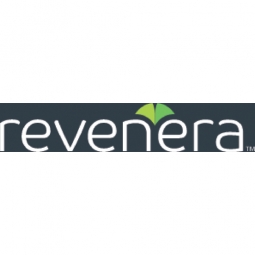Technology Category
- Cybersecurity & Privacy - Identity & Authentication Management
- Cybersecurity & Privacy - Security Compliance
Applicable Industries
- Cement
- Electronics
Applicable Functions
- Product Research & Development
- Quality Assurance
Use Cases
- Leasing Finance Automation
The Customer
Not disclosed
About The Customer
The customer is an engineering design software provider with customers throughout North America and Europe. Engineers use the company’s software to design some of the world’s most advanced and connected electronic products and systems—and to manage their projects more efficiently than ever. One of its field’s market leaders, it serves customers throughout the Americas and Europe, as well as a growing number of engineering firms throughout the Asia Pacific region and beyond. The company had never systematically instrumented its products to identify piracy, and wasn’t at all confident that it understood the magnitude of its problem.
The Challenge
The challenge faced by the engineering design software provider was to build a new compliance program from scratch, start earning revenue quickly, and expand to multiple geographical markets. The company had never systematically instrumented its products to identify piracy, and wasn’t at all confident that it understood the magnitude of its problem. Like many software companies, it had relied primarily on anecdotes, speculation, and tips from disgruntled employees, but it had no reliable data to set priorities for enforcement, or to pursue specific infringers. The company needed a solution that could provide reliable data and help them pursue leads in different markets.
The Solution
The company decided to partner with Revenera on a pilot compliance program. During 2017, it instrumented the latest version of one major product. Within weeks, Revenera had moved through the technical milestones required to accurately identify piracy, and the company could begin identifying and pursuing leads. As trustworthy data rolled in, the company began tasking Revenera with pursuing leads in eastern and southern European markets. In these geographies, it had no previous compliance resources, and expected that leads might be challenging to pursue. As Revenera quickly demonstrated success in these markets, the company expanded the program throughout Europe and the Americas. The company now has comprehensive and reliable information to prioritize and strategize enforcement. On a day-to-day basis, Revenera collaborates closely with it to start pursuing leads, build proposals, respond to communications from infringers, and close deals.
Operational Impact
Quantitative Benefit

Case Study missing?
Start adding your own!
Register with your work email and create a new case study profile for your business.
Related Case Studies.

Case Study
Remote Temperature Monitoring of Perishable Goods Saves Money
RMONI was facing temperature monitoring challenges in a cold chain business. A cold chain must be established and maintained to ensure goods have been properly refrigerated during every step of the process, making temperature monitoring a critical business function. Manual registration practice can be very costly, labor intensive and prone to mistakes.

Case Study
System 800xA at Indian Cement Plants
Chettinad Cement recognized that further efficiencies could be achieved in its cement manufacturing process. It looked to investing in comprehensive operational and control technologies to manage and derive productivity and energy efficiency gains from the assets on Line 2, their second plant in India.

Case Study
Cloud Solution for Energy Management Platform-Schneider Electric
Schneider Electric required a cloud solution for its energy management platform to manage high computational operations, which were essential for catering to client requirements. As the business involves storage and analysis of huge amounts of data, the company also needed a convenient and scalable storage solution to facilitate operations efficiently.

Case Study
Leveraging the IoT to Gain a Competitive Edge in International Competition
Many large manufacturers in and outside Japan are competing for larger market share in the same space, expecting a growing demand for projectors in the areas of entertainment, which requires glamor and strong visual performance as well as digital signage that can attract people’s attention. “It is becoming more and more difficult to differentiate ourselves with stand-alone hardware products,” says Kazuyuki Kitagawa, Director of Service & Support at Panasonic AVC Networks. “In order for Panasonic to grow market share and overall business, it is essential for us to develop solutions that deliver significant added value.” Panasonic believes projection failure and quality deterioration should never happen. This is what and has driven them to make their projectors IoT-enabled. More specifically, Panasonic has developed a system that collects data from projectors, visualizes detailed operational statuses, and predicts issues and address them before failure occurs. Their projectors are embedded with a variety of sensors that measure power supply, voltage, video input/ output signals, intake/exhaust air temperatures, cooling fan operations, and light bulb operating time. These sensors have been used to make the projector more intelligent, automatically suspending operation when the temperature rises excessively, and automatically switching light bulbs. Although this was a great first step, Panasonic projectors were still not equipped with any capability to send the data over a network.





